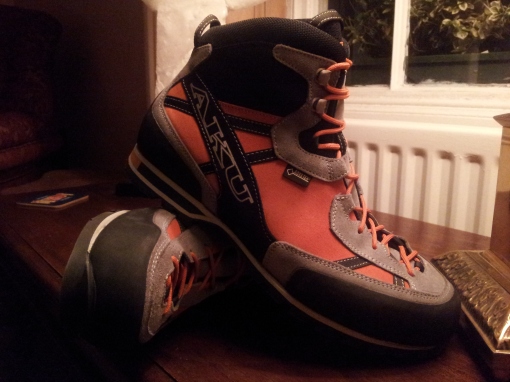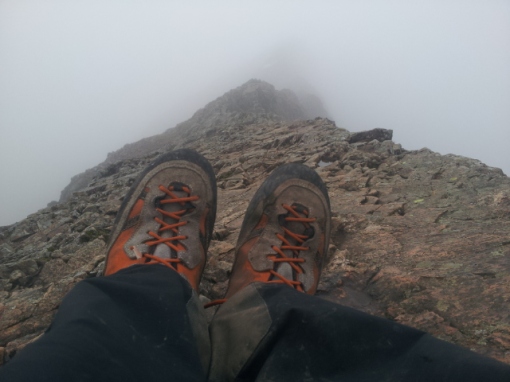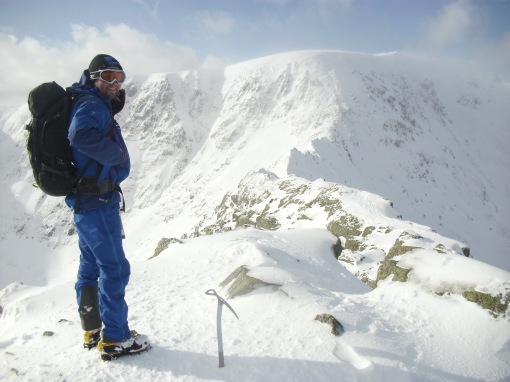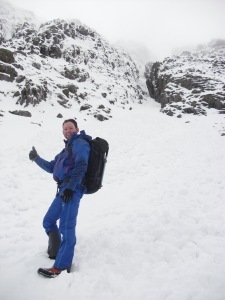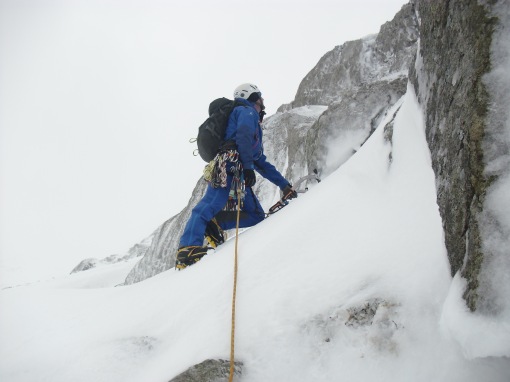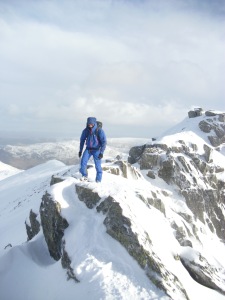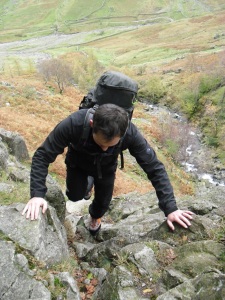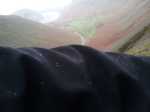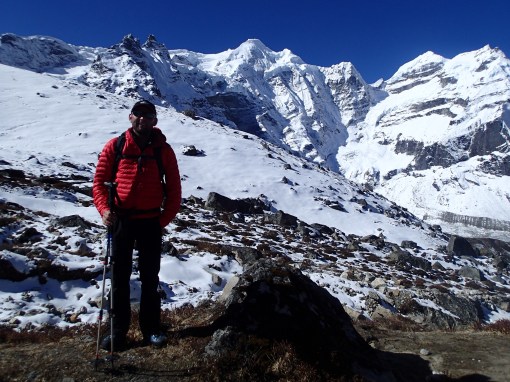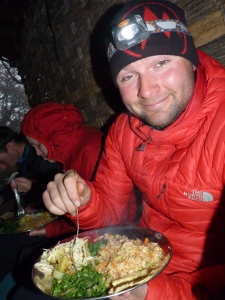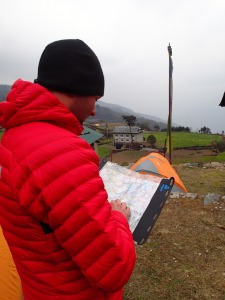AKU’s Techy Bit:
“The SL Sintesi GTX is designed for serious hikers who are looking for a precision fit, with an emphasis on lightweight construction, stability and protection on variable terrain. The IMS-1 Internal Midsole System in this boot features an anatomically-shaped lasting board with an internal 5mm layer of EVA. This results in immediate comfort (without having to be “broken in”) and reduced weight. Another benefit is that it keeps the hiker low to the ground, weight is evenly distributed, and lateral and frontal slippage is controlled. The 1.8mm suede upper features rubber heel and toe protection and the Vibram Mulaz® outsole features a climbing zone at the toe for precision. The precision lacing system extends further to the toe for a more precise fit.”
- Usage: These are primarily low-cut with a close fit, sticky rubber soles, and toe rands. Designed for light hiking and scrambling.
- Upper: Nubuck Leather
- Membrane: Gore-Tex
Our Thoughts:
With my third pair of La Sportiva Trango’s biting the dust in just 2 and a bit seasons I felt it was time for a change. I am a fan of wearing a more rigid boot on a day to day basis, however I felt I was burning through these ‘scrambling’ boots way too rapidly. I have now decided to get myself a pair of lightweight summer hiking boots (Salamon Cosmics), and so it meant I needed something to fill the void on the boot rack for my scrambling endeavours, a style of mountaineering I probably indulge in the most. With the help of the guys at Keswick Boot Company I landed on the AKU SL Sintesi GTX. 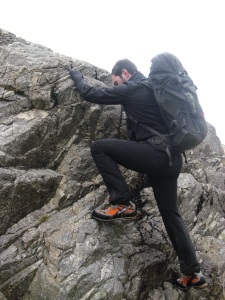
Firstly, the boot looks super sexy! People will always say ‘it’s not about the look, it’s about how good they are’, but if something is this good looking then it’s hard to resist. I put them on in the shop and they felt great. There is a fair bit of arch support, and I would say they are more of an average-narrow fit based on the way the toe tapers in. You will see from the pictures that the laces come quite far down the boot, and this gives the boot a more precise fit, more like a laced climbing shoe.
So the boots look good, and feel good in the shop, how do they do in the outdoors?
Since having the boots I have managed to test them on loads of the classic scrambles in the Lakes and beyond including, Striding and Swirral Edge, Halls Fell and Sharp Edge, Sphinx Ridge, Crib Goch, Tryfan and finally the Bristly Ridge. This has meant I have tested them on a variety of rock types, and in varying conditions.
The blurb at the top of this review claims that the shaped last and EVA means that there is no real breaking in period. I actually disagree with this unfortunately. My Salamon Cosmics took zero breaking in, but these did cause me a little bit of pain on the first few wears. I went back to the old method of taping my feet before the walk (just like I had to do with my Trango’s when they were new too mind!) and popped in my Superfeet insoles. A few wears later and the boots were broken in to the point where I didn’t have to bother taping my feet and they cause me no discomfort at all (which technically means that they are comfortable!). All I’m saying with this is just be ready to break them in a little, just like you had to do with every single boot you would buy no more than a decade ago.
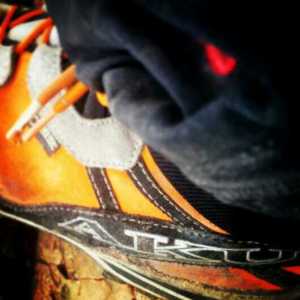 The Sintesi hosts a Gore-Tex membrane, which coupled with the Nubuck Upper makes them super waterproof. I am not always sold on Gore-Tex Products, I have been let down by a lot of Gore-Tex products, but so far the lining in these has so far proved to be bomber. The sole is a Vibram Mulaz® which has also proven to do what it is meant to do and be super grippy. Even on wet lichen covered rock on Sphinx Ridge in November the boots were constantly biting down and giving me the confidence I needed in such conditions. The sole has ‘climbing zone’ on the toe which again allows greater precision. The rigidity of the boot partnered with this climbing zone means that you can 100% trust them on some quite small footholds.
The Sintesi hosts a Gore-Tex membrane, which coupled with the Nubuck Upper makes them super waterproof. I am not always sold on Gore-Tex Products, I have been let down by a lot of Gore-Tex products, but so far the lining in these has so far proved to be bomber. The sole is a Vibram Mulaz® which has also proven to do what it is meant to do and be super grippy. Even on wet lichen covered rock on Sphinx Ridge in November the boots were constantly biting down and giving me the confidence I needed in such conditions. The sole has ‘climbing zone’ on the toe which again allows greater precision. The rigidity of the boot partnered with this climbing zone means that you can 100% trust them on some quite small footholds.
As I’ve been completing these scrambles the boots have of course been subject to a bit of a bashing by the rough rock. I have even had to stop and look at the boot a few times expecting there to be a hole in the side based on the sound that came from below. The Sintesi’s have not shown any signs of a beating despite all of this, not even a single seam looks ready to come undone. This is probably what I am most impressed with, they are incredibly tough, especially for quite a lightweight boot (550g’s). To add to the durability AKU have fitted a rubber toe and heel rand. From my experience this was always the first point of weakness with my La Sportiva’s. AKU seemed to have done a really good job at blending the rubber into the nubuck so there is hardly a seam for any rock to pull at, whereas there is certainly one on the Sportivas.
To Conclude:
If you enjoy a lot of scrambling, or even hiking fairly fast on rocky terrain, then I would certainly recommend you get a pair of these on your feet. At £195 they are not a cheap option, but the build quality, durability and performance makes them worth every single penny.
I must also recommend that you head to the folks at Keswick Boot Company as they will be able to provide you with a superb fitting service, backed up by great Knowledge.
